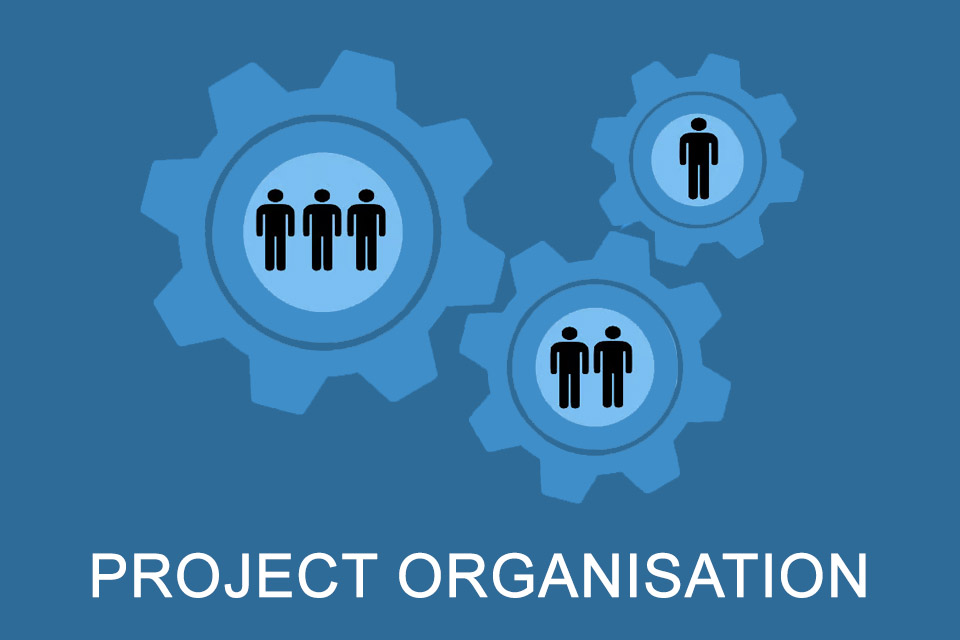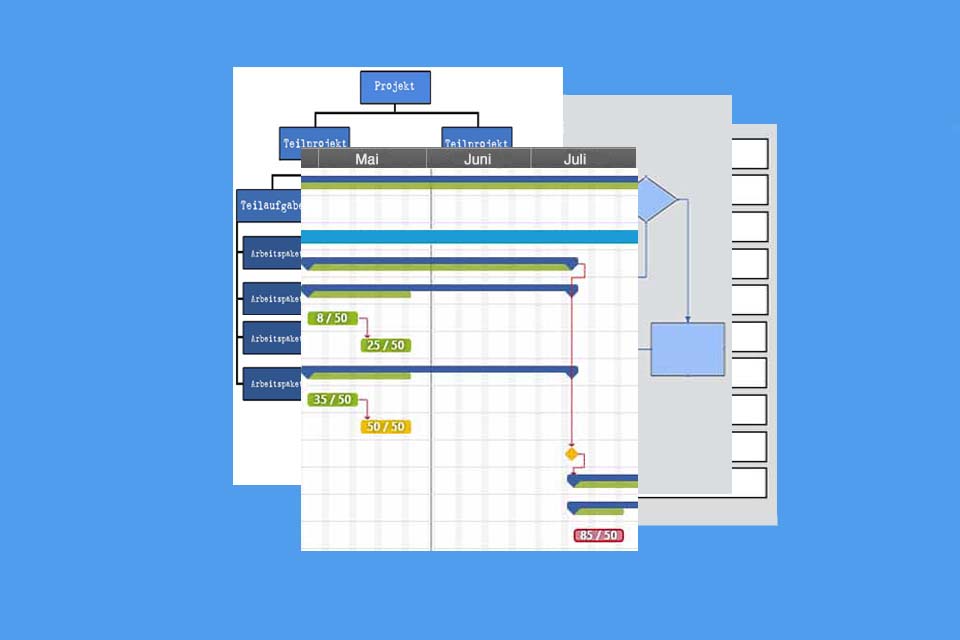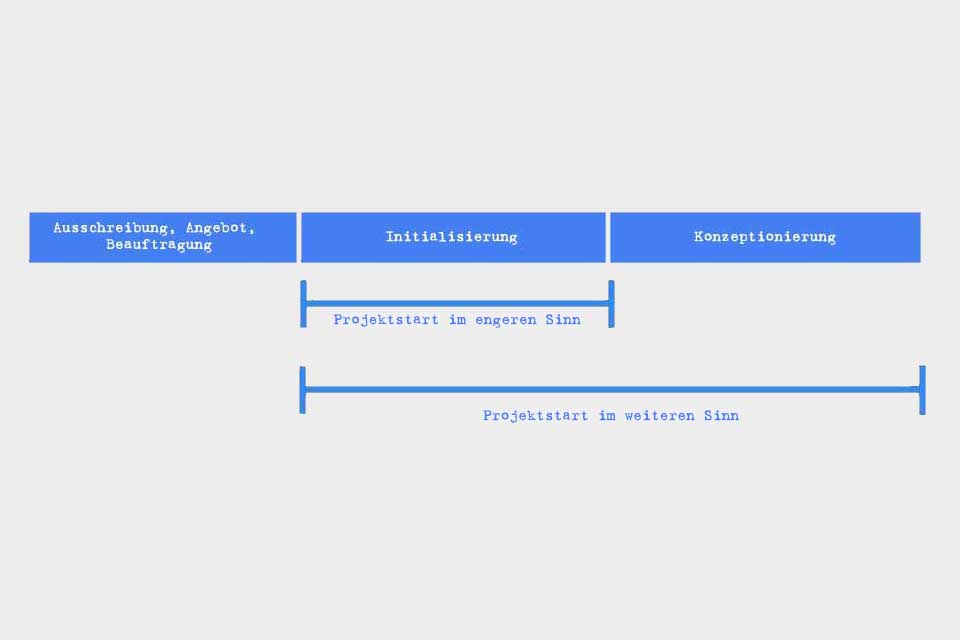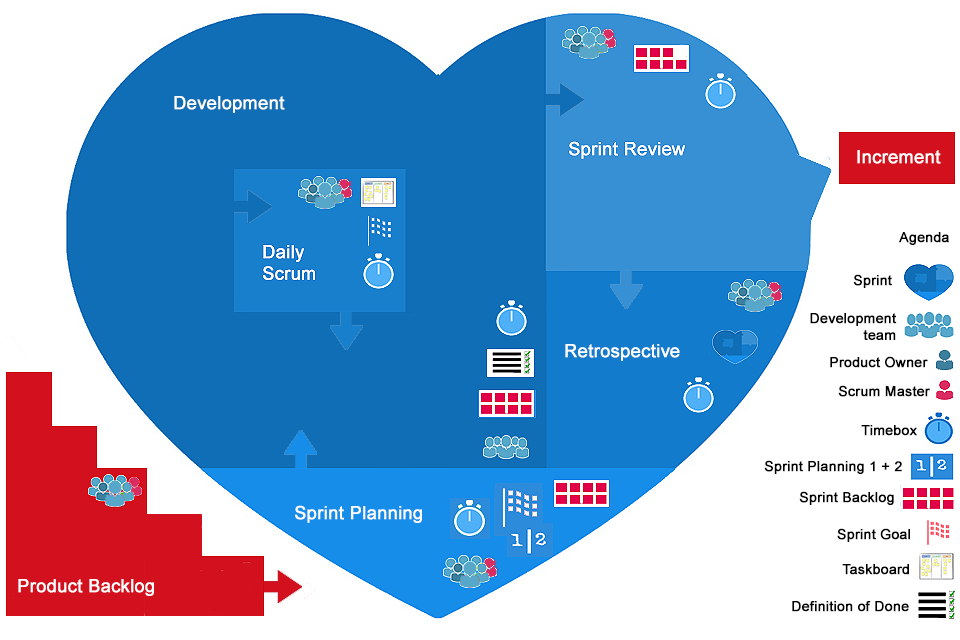What is a Project Organisation?
Smartpedia: The project organisation comprises the entirety of all structural and procedural organisational regulations for the handling of a defined project.
Project Organisation – Definition
By definition, a project is something unique that is distinct from other projects, has different content, time, personnel and financial conditions, and pursues a defined goal. The classic line organisation in companies – also known as traditional, primary or core organisation – often cannot do justice to this uniqueness. As a result, so-called project organisations – also known as secondary organisations – often arise.
It is a widespread misconception that a project organisation only has the structure of a project in mind. Also and especially the course of the concrete project is in focus. DIN 69901 accordingly defines a project organisation as “the totality of the organisational units and the structure and procedural organisational regulations for the processing of a specific project”. Or to put it another way: A project organisation – which, like a project, is always only temporary – is understood to mean the structure, the design and the planned course of a project.
Terms in the context of project organisation
Project organisation is a very central issue in project management, so it is not surprising, given such a broad definition, that many terms are mentioned in the context of project organisations:
- bodies such as Project Management Office (PMO), steering committee, governing body
- used processes, workflows, methods and tools,
- techniques to be used, such as precedence diagrams, taskboards, retrospectives,
- organisational aspects such as organigrams, project management, project team, decision making, meetings, reporting etc.
Goals of a project organisation
There are interactions between a company organisation and a project organisation. Many companies work with optimised processes. They have learned to do the same things as optimally as possible with their primary organisation. But new challenges often require a different form of cooperation: a project. And for projects to be carried out successfully, suitable project organisations are needed.
Companies “lend” employees and resources (i.e. work equipment, materials, machines) – usually within a defined time frame – to projects and expect them to achieve different goals:
- The use of competences and synergies.
- The acceleration and improvement of decisions.
- The reduction of the coordination effort.
- The increase of flexibility.
- And, of course, the achievement of the defined project goals in the specified quality with the resources provided within the agreed time.
Even if the establishment of a project organisation initially causes efforts and costs, a company hopes – in most cases – that the project will increase its profitability at least in the medium term. Exceptions are projects that companies set up to comply with new standards and laws, for example. But even these projects, even if indirectly, ideally contribute to improved productivity and profitability.
Types and forms of project organisations
With regard to the structural organisation, there are different types and forms of project organisation. The following types can be distinguished:
- Internal company project organisation
- Cross-company project organisation
- Project company
The internal company project organisation is the most common form. Usually, employees from one or more departments work together temporarily on a joint project.
In cross-company project organisations, employees from different companies work together in partnership across company boundaries.
The project company is a special type of project organisation, as it is not only organisationally, but also legally – and possibly also for liability reasons – separate from the enterprise organisation. It is therefore a legally independent enterprise, in which the companies whose employees actively participate in the new project company own shares.
The following forms of internal project organisation exist:
- staff organisation or staff and line organisation
- autonomous or pure project organisation
- matrix project organisation
Each of these forms of organisation has advantages and disadvantages. Differences lie on the one hand in the setting (is it an internal project or do different companies work together), and on the other hand in the technical and disciplinary powers and the target responsibility of the project managers.
In a staff organisation (also known as a staff line or staff and line organisation), the project manager has neither technical nor disciplinary authority and often does not even have a permanent project team. Since he or she advises the organisation and in particular the management, it is also referred to as an influence project organisation. It is mostly used for rather small, uncritical projects where many organisational units are affected. It is important that, despite the comparatively low priority, the management stands behind the project.Otherwise, the project can quickly fall behind due to the lack of authority of the project manager.
In autonomous or pure project organisation, all employees leave their original departments for the duration of the project in order to dedicate their entire working time to the project. The project manager has both technical and disciplinary authority to issue instructions and has full responsibility for the objectives.
The pure project organisation is often used for large, strategically important or time-critical, possibly also particularly risky projects. In theory, the high level of identification of the project participants is often cited as an advantage, but this is only true if participation in the project is “voluntary”. In addition, there also occur – depending on the duration of the project – time and again problems with the reintegration of employees into the line structure.
Most frequently, the matrix project organisation or the matrix organisation can be found in practice. In this form of organisation, the employees remain in their departments and each department head retains his or her disciplinary authority. The project manager receives – for the period in which the employees are active for the project – the professional authority to give instructions. This setting alone results in an increased need for coordination and agreement, especially since the project competes with line activities for availability. In this case, for example, it is advisable to have a steering committee “upstream” and to solve potential conflicts as neutrally as possible.
A special form of project organisation is line project organisation, where no independent organisational unit is set up, as the employees already belong to a common department. Line project organisation is therefore particularly suitable for smaller projects, especially because no experts from other departments or areas are needed to implement the project.
The following forms of cross-company project organisation exist:
- Single order organisation
- Consortium organisation
- General contractor organisation
In the case of a single order organisation, the client awards individual, defined contracts to project contractors. The client is responsible for the project. In a consortium organisation, various companies form a consortium that bears joint responsibility for the project. And in the general contractor organisation, a general contractor assumes project responsibility and awards individual project contracts to subcontractors.
Project management in the project organisation
If a project organisation is understood to mean the structure and design of a project, as well as the planned course of a project, there is still one question unanswered: How does the actual project management work? And the answer is: it depends. Among other things, it depends on the setting and the experiences of those involved in the project, as well as the subject of the project.
Example 1: Several companies work together in the project organisation. This is a large, complicated project. The participants decide to use V-Modell XT as the process model, because the model knows both customer and contractor projects, it uses a uniform language and defined documents – the so-called products – which are handed over to the parties involved at defined times.
Example 2: It is an internal company project in a complex environment. A flexible approach is required: Scrum with small iterations, daily coordination of the project team, continuous exchange of content with the stakeholders and the use of new insights are in the foreground.
The setting and the concrete challenges therefore determine not only the project organisation but also the form of project management. The choice of approach therefore requires experience, but also a willingness to cooperate and the will to communicate.
Impulse to discuss
If the project organisation stands for both the structure and the process of a project, why is the organigram – actually a synonym for an organisational structure – used for visualisation in most cases?
Notes:
If you like the article or would like to discuss it, please feel free to share it in your network. And if you have any comments, please do not hesitate to send us a message.
Here you will find additional information from our Smartpedia section:




